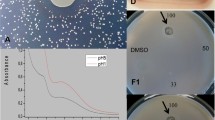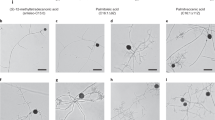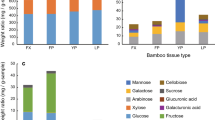Abstract
INTEREST in the morphology of fungal assimilatory organs was aroused by the appearance of vesicles and arbuscles on hyphæ of Memnoniella echinata penetrating textile fibres during cellulolysis. Vesicles have been reported on hyphæ within a medium when they are grown under conditions of deficient aeration, increased ionization, physiological unbalance of temperature, humidity or nutrition, and especially after the addition of bacterial, fungal or plant metabolites. No arbuscles have been obtained by these means, probably because the conditions or concentrations necessary for their appearance suppress germination of spores and growth of the fungus. The temporary arbuscular development on certain mutant strains of Phytophthora cactorum described by Stamps1 suggests lack of a biosynthetic intermediate concerned with cell-wall structure. Inhibition of normal metabolic pathways, accentuation of overflow intermediates, and the functioning of latent shunt reactions, probably underlie vesicular development under the conditions enumerated above. The transformation of Gram-negative bacilli into swollen spherical cells because of reduction in cell-wall content of muramic and diaminopimelic acids described by Salton and Shafa2 as the effect of a fungal metabolic product, and by Brenner et al.3 as the result of lysozyme treatment, bacteriophage action, excess lysine, and deprival of diaminopimelic acid, together with the recent work of Eddy and Williamson4 on the development of irregularly shaped outgrowths on yeast protoplasts under the action of digestive juices, seem to be similar phenomena. In the experiments now to be described, I accept as a working hypothesis that vesicles and arbuscles are primarily a manifestation of fungitoxic factors, though an element of adaptation to nutritional requirements undoubtedly enters into their morphology.
This is a preview of subscription content, access via your institution
Access options
Subscribe to this journal
Receive 51 print issues and online access
$199.00 per year
only $3.90 per issue
Buy this article
- Purchase on Springer Link
- Instant access to full article PDF
Prices may be subject to local taxes which are calculated during checkout
Similar content being viewed by others
References
Stamps, D. J., Trans. Brit. Mycol. Soc., 36, 248 (1953).
Salton, M. J. R., and Shafa, F., Nature, 181, 1321 (1958).
Brenner, S., et al., Nature, 181, 1713 (1958).
Eddy, A. A., and Williamson, D. H., Nature, 183, 1101 (1959).
Author information
Authors and Affiliations
Rights and permissions
About this article
Cite this article
ATKINS, G. Production of Fungal Arbuscular Organs on Laboratory Media. Nature 184, 1738–1739 (1959). https://doi.org/10.1038/1841738a0
Issue Date:
DOI: https://doi.org/10.1038/1841738a0
Comments
By submitting a comment you agree to abide by our Terms and Community Guidelines. If you find something abusive or that does not comply with our terms or guidelines please flag it as inappropriate.



